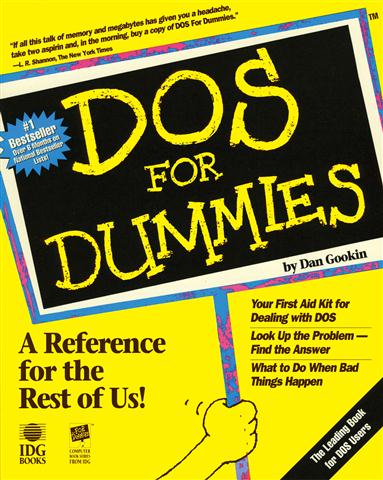An IDG Books employee overheard a customer at a software store complain that there were no books available to help him learn the basics of the DOS operating system. "Something," he suggested, "like DOS for dummies." After
becoming president of IDG Books, John Kilcullen hearkened back to this comment
that he’d overheard and acknowledged that he’d sometimes felt like a computer
“dummy” himself and wanted to do something about the user frustration that was
increasing with the proliferation of computers. A book concept was developed, a search for the right author ensued and, in November 1991, DOS For Dummies rolled off the presses. The rest was brand history. DOS For Dummies was the first computer book to:
DOS For Dummies was the first computer book to:
- Assume that the reader had no prior knowledge of the topic.
- Acknowledge that lack of experience in the subject matter was nothing to be ashamed of.
- Use icons featuring tips, warnings and other clues to help readers navigate through the material.
- Address the reader as "you" in the text.
At first, most bookstore chains didn't want to stock DOS For Dummies. Buyers worried that the title would insult their customers. But the response of readers spoke for itself. In less than two weeks, the initial print run of 7,500 sold out, and in the first 14 months, the book sold more than 1.5 million copies. The books seemed to sell themselves: old-fashioned word-of-mouth marketing was key.
Soon people were writing letters asking whether For Dummies had a book on "their problem." Among the problems were software programs like WordPerfect and the Macintosh operating system, as well as other computer hardware and, eventually, personal finance, investing, sports, health and much more.

